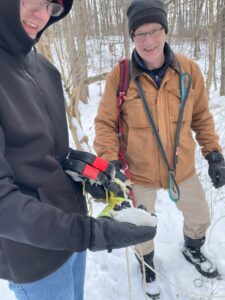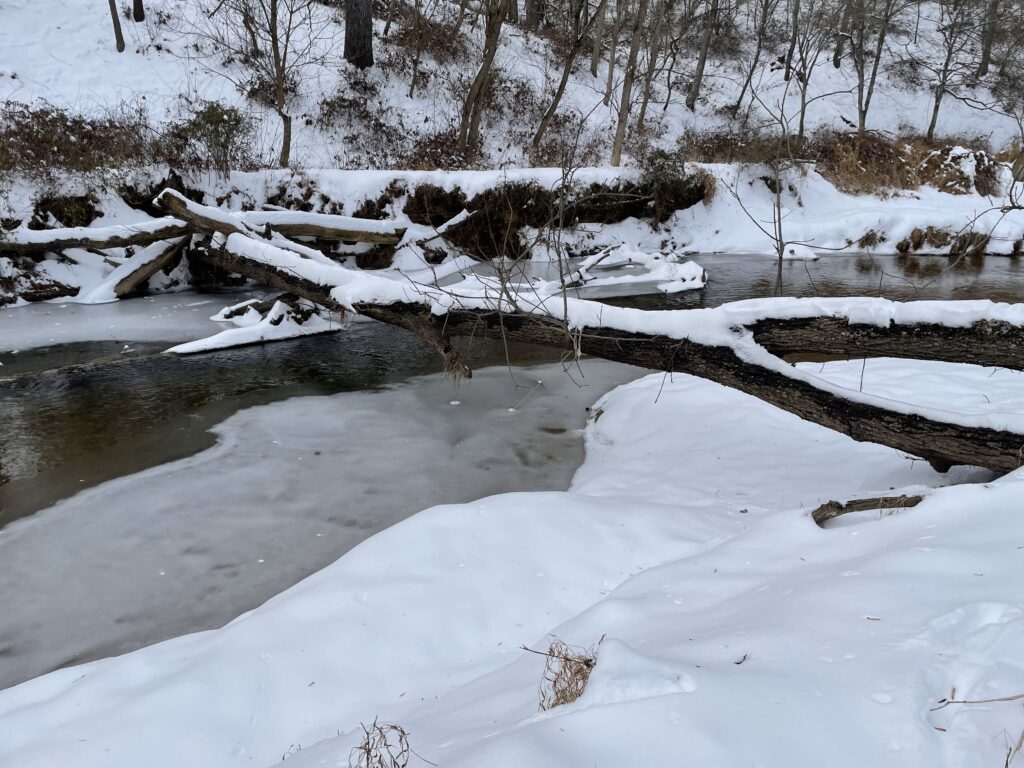
Winter storms don’t just bring snow—they send road salt into streams, disrupting freshwater ecosystems. Salt is necessary for road safety, but once it washes into waterways, it can dramatically alter water chemistry, harming aquatic life. Until now, capturing these rapid changes as they happen has been challenging.
We developed the GaiaXus Water Guardian to change that.
During a major snowstorm, we deployed our sensor in a local creek downstream from a highway bridge to measure water temperature, turbidity, and conductivity every five minutes. Over 40 hours of continuous monitoring, the Guardian recorded clear patterns that reflected the storm’s progression.
One of the most striking results was the spike in conductivity, a direct indicator of road salt contamination. Conductivity remained stable through the first snowfall, but as road crews applied salt and melting began, levels increased sharply. A second spike occurred the following night, likely from additional road treatments. These readings confirm that salt enters waterways in pulses rather than as a steady flow, moving quickly downstream with the current. Without continuous monitoring, these short-lived contamination events would be missed entirely.
Despite freezing temperatures and ice buildup, our sensor remained fully operational throughout the storm. The battery held over 60% charge after 40 hours, proving its reliability for long-term, unattended deployment in harsh conditions. Turbidity data also showed expected trends, with increased sediment movement during snowmelt phases.
This experiment proves what we set out to achieve: with our robust, cost-effective technology, environmental monitoring is no longer limited to ideal conditions. Citizen scientists, educators, and researchers now have the tools to track pollution events in real time, providing critical data for conservation efforts.
You can download the full report here and also watch the timelapse video of the snowstorm on our YouTube channel
Science doesn’t stop for the storm, and with the right tools, neither do we.
